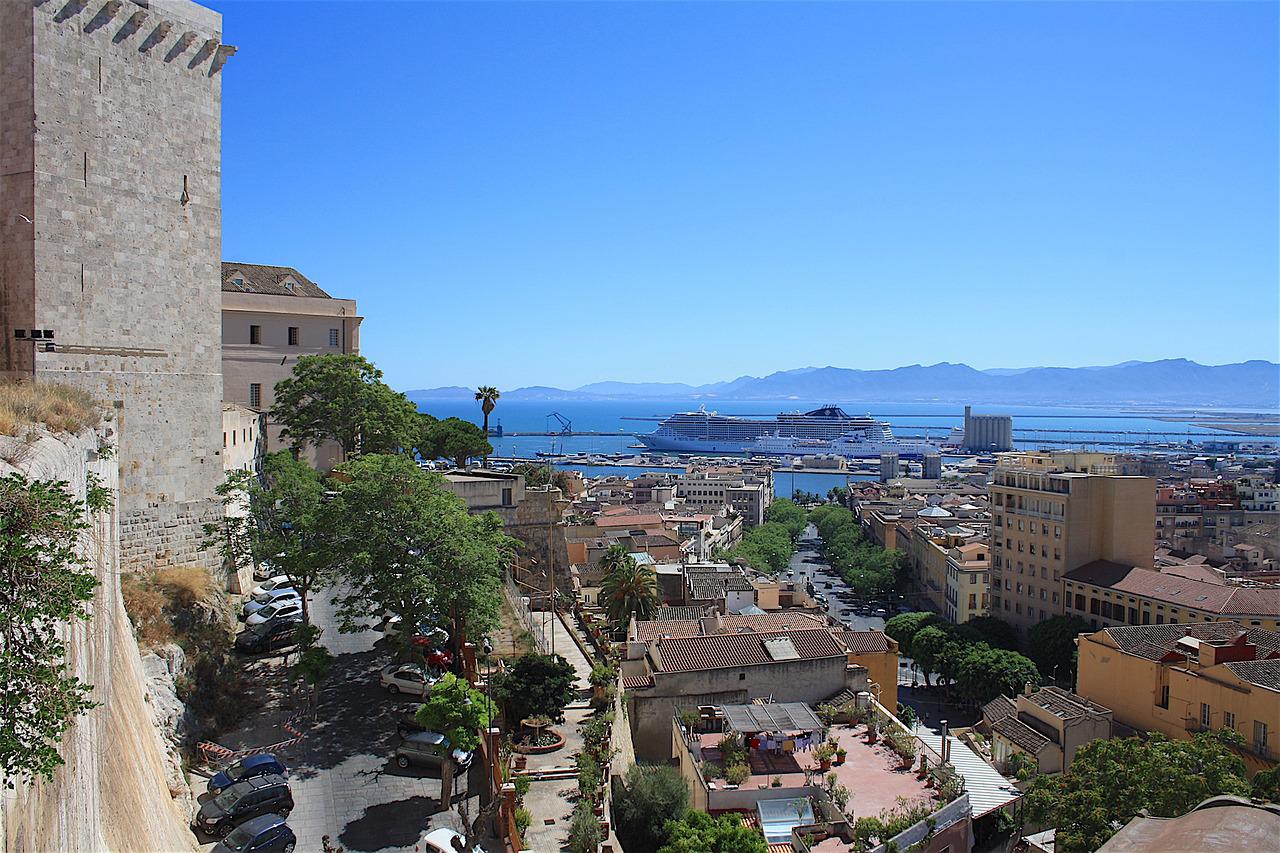Cagliari, an ancient (Latin), Caralis or Carales city, is the capital of Sardinia’s island regione, Italy. It is located on the south coast of the island, at the Gulf of Cagliari’s northern extremity. It was likely occupied during prehistoric times. However, the foundation of its existence is attributed to Phoenicians. It was also known as Cardlis by the Greeks and Caralis by the Romans. It was the principal Carthaginian fortress in Sardinia. In the Second Punic War (218-201 BC), it was occupied and reoccupied by the Romans. Julius Caesar probably granted full Roman civic rights to the town in the 1st Century BC. Caralis was the capital of the island in imperial Roman times, which is after 27 BC. This was mainly due to its fine harbour and where Misenum’s fleet was stationed. It was the home of the Roman governor between the 4th and 5th century AD. It was also the main point of the Sardinian roads system. It was an independent city in the European Middle Ages, but it fell to the Pisans, the Aragonese, and then passed, along with the rest Sardinia to the house Savoy in 1718.
The site of the Carthaginian Acropolis is likely to be the medieval town. However, the western quarter and Marina quarters of the lower town were more important under Roman rule, as evidenced by the extensive Roman necropolis and the great Roman amphitheatre.
The Cathedral of Santa Cecilia (1257-1312, rebuilt 1669-1702), has two of its original transept doors. There are also parts of the Pisan fortifications including the towers of San Pancrazio (11305) and Elefante (11307), as well as the archaeological museum and the University of Cagliari (1606). The Basilica of San Saturnino (or SS) is an early Christian basilica, built in the Villanova district, east of Marina. Cosma and Damiano, rebuilt during the 12th century. Cagliari is an archipelagoal see.
Cagliari was the military headquarters of the island for many years. It had important Italian naval bases and air bases before they were destroyed by heavy Allied bombing during World War II. It is now Sardinia’s main port. Lead, zinc, salt and other minerals are the main exports. Important exports include agriculture and salt extraction; cement, superphosphates and ceramics are made; and flour mills as well as sugar refineries.
